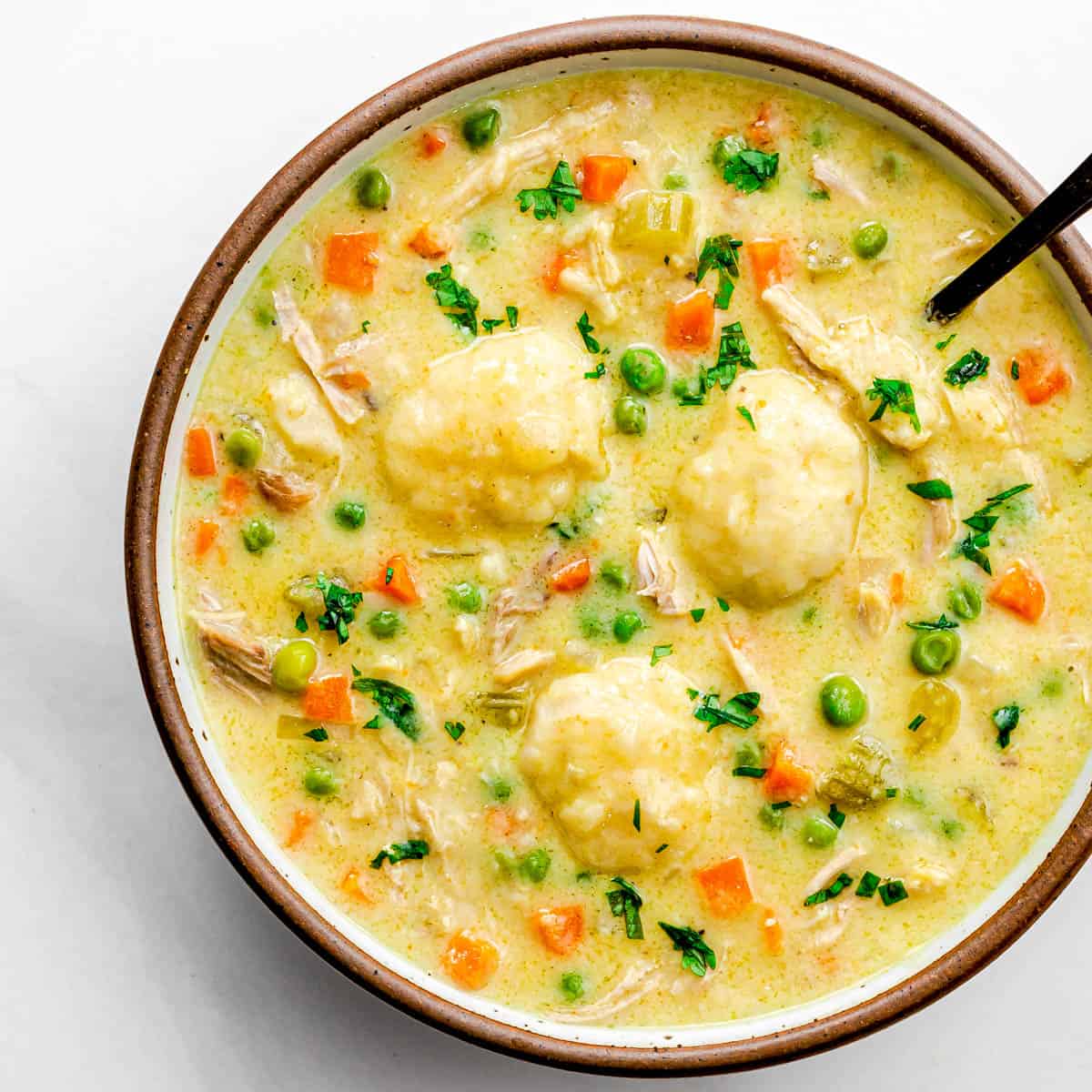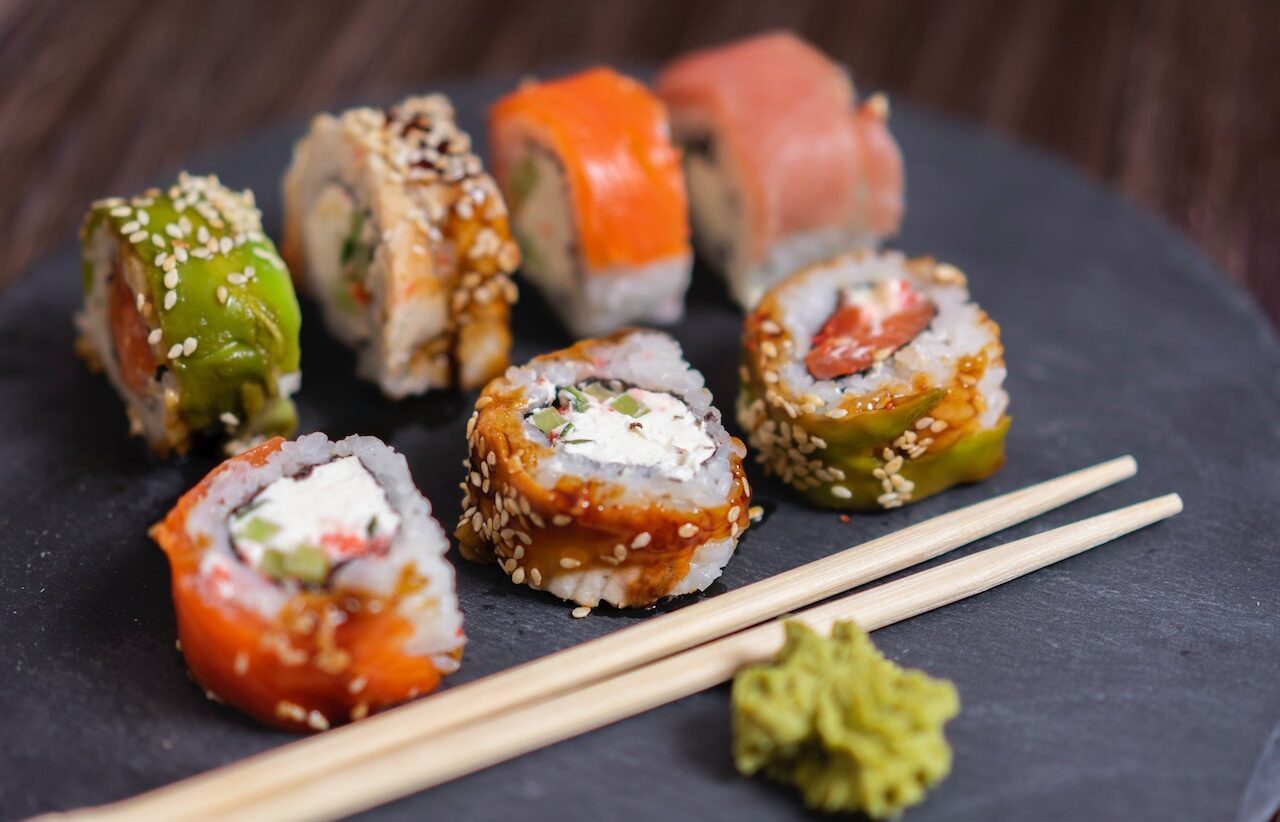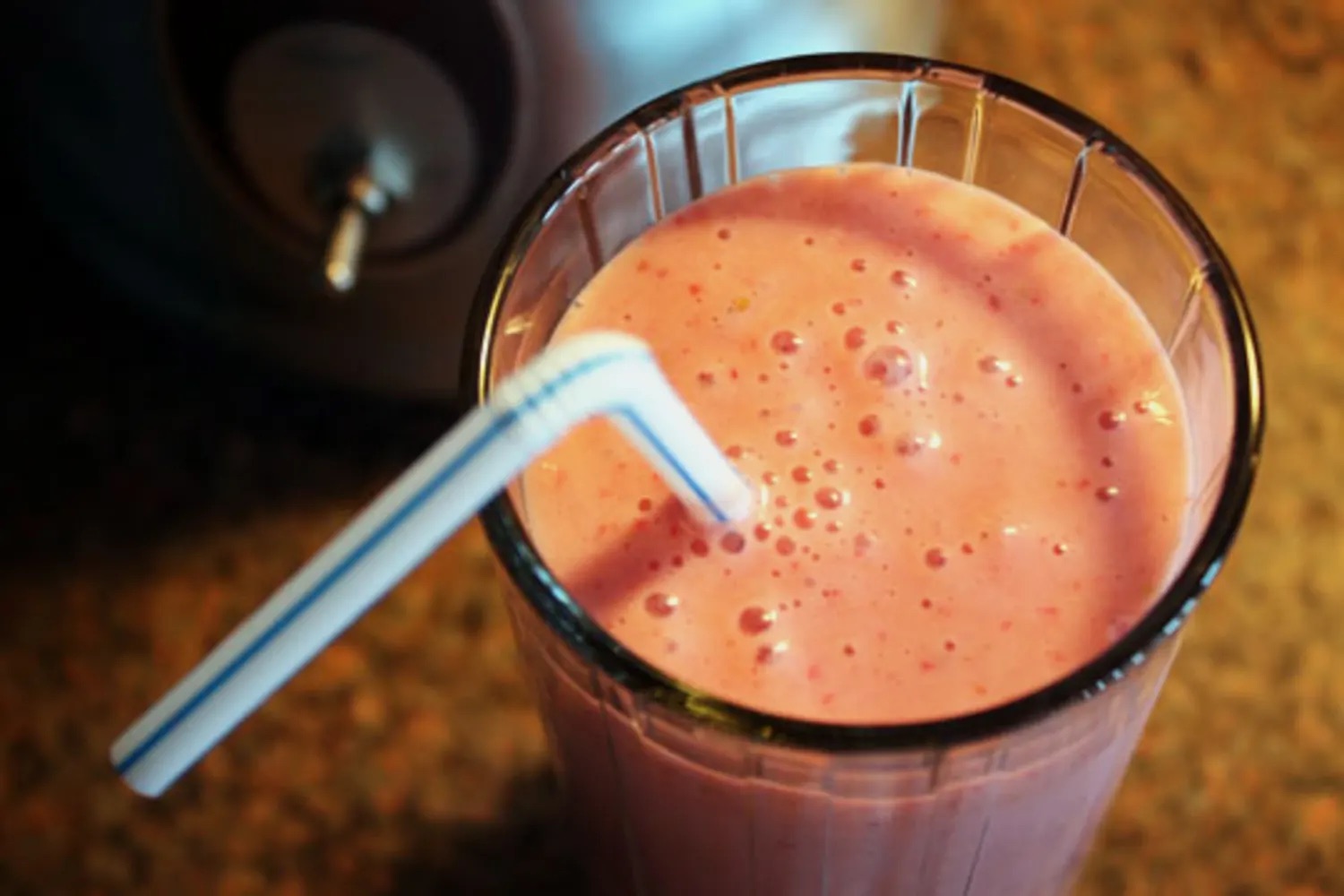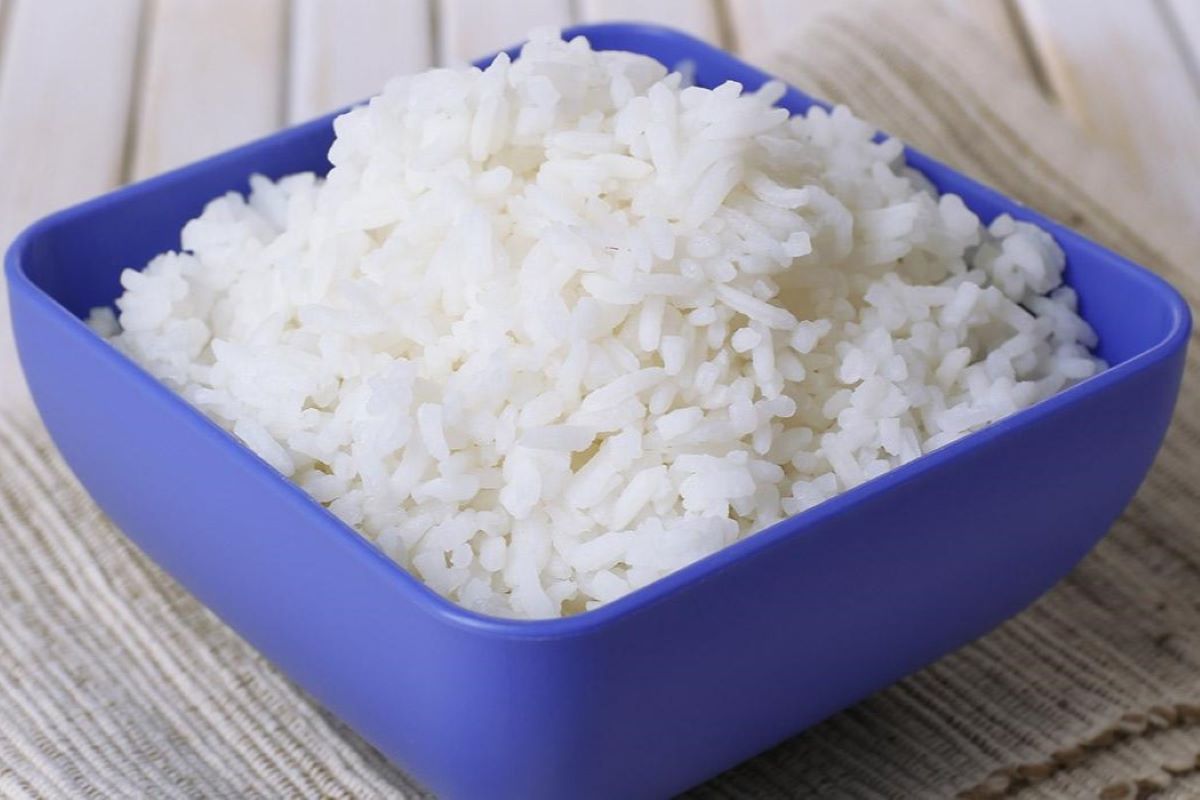

Articles
How To Store Leftover Chicken And Dumplings
Modified: February 27, 2024
Learn how to properly store leftover chicken and dumplings with these helpful articles. Find tips and tricks to keep your leftovers fresh and delicious.
(Many of the links in this article redirect to a specific reviewed product. Your purchase of these products through affiliate links helps to generate commission for Storables.com, at no extra cost. Learn more)
Introduction
Welcome to the delicious world of leftovers! Have you ever found yourself with a bowl full of leftover chicken and dumplings and wondered how to store them properly? Well, fret not, because in this article, we will walk you through the best practices for storing leftover chicken and dumplings.
Chicken and dumplings is a classic comfort food that is both hearty and satisfying. Whether you’ve made a batch from scratch or ordered it from your favorite restaurant, it’s not uncommon to have leftovers. But don’t let those leftovers go to waste! With a few simple steps, you can preserve the flavors and enjoy your chicken and dumplings for another day.
Storing leftover chicken and dumplings comes with several benefits. Firstly, it allows you to extend the life of your meal, reducing food waste and saving you money. Secondly, it provides an opportunity to enjoy a delicious homemade meal without the hassle of cooking from scratch. And lastly, having ready-to-eat leftovers in your fridge or freezer can be a lifesaver on busy days when you don’t have time to prepare a meal.
However, it’s essential to store your leftover chicken and dumplings correctly to maintain their taste and texture. This article will guide you through the best practices for storing, refrigerating, freezing, and reheating your leftover chicken and dumplings, ensuring that they remain fresh and delicious.
So, if you’re ready to learn the secrets of storing leftover chicken and dumplings, let’s dive in!
Key Takeaways:
- Don’t let your leftover chicken and dumplings go to waste! Properly storing, refrigerating, and freezing them can extend their shelf life, reduce food waste, and provide convenient, ready-to-eat meals on busy days.
- Choose the right containers, follow safe handling practices, and utilize proper reheating techniques to enjoy your leftover chicken and dumplings with the same deliciousness as when they were freshly made. Embrace the world of leftovers and savor every bite!
Read more: How To Store Chicken And Dumplings
The Benefits of Storing Leftover Chicken and Dumplings
Storing leftover chicken and dumplings offers a variety of benefits that make it a smart choice for both convenience and budget-conscious individuals. Here are some of the advantages of properly storing your leftovers:
1. Minimizes Food Waste:
By storing your leftover chicken and dumplings, you can prevent it from going to waste. Instead of throwing away a delicious meal, you can enjoy it again later. This not only saves you money but also contributes to reducing food waste, which is a significant environmental concern.
2. Cost-Effective:
Preparing homemade chicken and dumplings requires time and ingredients. By saving and storing the leftovers, you can enjoy an extra meal or two without the need to cook from scratch. This can help stretch your food budget and make the most of your resources.
3. Ready-to-Eat Convenience:
Having leftover chicken and dumplings in the fridge or freezer means you always have a quick and easy meal option on hand. Whether it’s a busy weeknight or a lazy weekend, you can simply reheat the leftovers and enjoy a delicious and comforting meal without the need for extensive preparation or cooking.
4. Enjoy the Flavors Longer:
The flavors in chicken and dumplings tend to meld and develop over time, making the leftovers even more flavorful. By storing and properly reheating the leftovers, you can savor the rich and delicious taste of the dish for days after it’s been freshly made.
5. Versatile Meal Options:
Leftover chicken and dumplings can be used in various creative ways to create new dishes. You can mix it with fresh vegetables to make a hearty soup, use it as a filling for sandwiches or wraps, or even transform it into a delicious pie filling. The possibilities are endless, allowing you to enjoy the dish in different forms.
6. Time-Saving Solution:
With leftover chicken and dumplings at your disposal, you won’t have to spend hours in the kitchen preparing a meal from scratch. Instead, you can quickly reheat and enjoy the leftovers, saving valuable time that can be spent on other tasks or activities.
By understanding and utilizing the benefits of storing leftover chicken and dumplings, you can make the most of your meals, reduce waste, and enjoy delicious and convenient options whenever you desire.
Best Practices for Storing Leftover Chicken and Dumplings
When it comes to storing leftover chicken and dumplings, following the best practices ensures that the flavors and textures remain intact. Here are some tips to help you store your leftovers properly:
Read more: How To Store Dumplings
1. Cool Down Quickly:
After enjoying your meal, it’s essential to cool down the leftover chicken and dumplings as quickly as possible. Leaving them at room temperature for too long can lead to bacterial growth, compromising the safety and quality of the food. Divide the leftovers into shallow and wide containers to promote rapid cooling.
2. Use Airtight Containers:
Opt for airtight containers to store your leftover chicken and dumplings. This helps maintain freshness, prevent any transfer of odors, and minimize the risk of freezer burn. Make sure the containers are leak-proof to avoid any spills or messes in your refrigerator or freezer.
3. Label and Date:
Always label your containers with the contents and date of storage. This helps you keep track of when the leftovers were stored and ensures that you use them within a reasonable timeframe. It also prevents confusion and helps you remember what meals you have available for consumption.
4. Store in Appropriate Portions:
Consider dividing your leftover chicken and dumplings into individual or family-sized portions before storing them. This allows for easy reheating of smaller portions and reduces the risk of contaminating the entire batch when reheating only a portion of it.
Read more: How To Store Cooked Dumplings
5. Store in the Right Temperature:
If you plan to consume the leftovers within a day or two, store them in the refrigerator at or below 40°F (4°C). For longer storage, place them in the freezer at or below 0°F (-18°C). Adhering to the appropriate storage temperatures helps maintain the quality and safety of the food.
6. Avoid Overcrowding:
Avoid overcrowding your refrigerator or freezer with too many containers of leftovers. Adequate airflow is crucial for maintaining proper temperature and preventing spoilage. Leave space between the containers to allow for efficient chilling and freezing.
7. Use Proper Storage Times:
Leftover chicken and dumplings can be safely stored in the refrigerator for up to 3-4 days. If you plan to store them for longer, it’s best to transfer them to the freezer where they can be stored for 2-3 months without significant loss of quality.
By following these best practices, you can ensure that your leftover chicken and dumplings remain fresh, delicious, and safe to consume.
Container Options for Storing Leftover Chicken and Dumplings
Choosing the right containers for storing your leftover chicken and dumplings is essential to maintain their quality and freshness. Here are some container options that are ideal for storing and preserving your delicious meal:
Read more: How To Store Uncooked Dumplings
1. Glass Containers:
Glass containers with airtight lids are a great option for storing leftover chicken and dumplings. They are non-reactive, meaning they won’t absorb odors or flavors from the food. Glass containers also allow you to see the contents easily and are dishwasher-safe for easy cleaning. Look for containers with a secure seal to prevent any leakage.
2. Plastic Containers:
If you prefer using plastic containers, choose ones labeled as food-grade and BPA-free. Look for containers with airtight seals and ensure they are microwave-safe and freezer-safe. While plastic may not provide the same visual appeal as glass, it is lightweight and durable, making it convenient for transporting or storing in limited space.
3. Freezer Bags:
Freezer bags are a convenient option for storing leftover chicken and dumplings, especially when freezer space is limited. Opt for high-quality freezer bags that are thick and durable to prevent any leaks or freezer burn. Ensure the bags are sealed tightly, removing as much air as possible to reduce the risk of freezer burn.
4. Aluminum Foil:
If you’re looking for a budget-friendly option, aluminum foil can be used to wrap your leftover chicken and dumplings. Wrap the meal tightly in several layers of foil to create a barrier against moisture and air. Always place the foil-wrapped leftovers in a separate container to prevent any leaks.
Read more: How To Store Leftover Coffee
5. Mason Jars:
Mason jars can be a charming and eco-friendly option for storing individual servings of leftover chicken and dumplings. Make sure to leave some headspace in the jar to allow for expansion during freezing. Avoid filling the jars to the brim, as this can cause the glass to crack when the contents freeze.
6. Disposable Plastic Containers:
For a hassle-free option, disposable plastic containers can be used to store leftover chicken and dumplings. These containers are convenient for packing individual portions or for taking meals on the go. However, keep in mind that they may not be as sturdy for long-term storage or multiple freezing and reheating cycles.
Remember to choose containers that are appropriate for your storage needs, whether it’s for single servings or larger batches. Consider factors such as durability, convenience, and the ability to maintain an airtight seal to keep your chicken and dumplings fresh and flavorful.
Refrigerating Leftover Chicken and Dumplings
Refrigerating leftover chicken and dumplings is a convenient option when you plan to consume them within a few days. Proper refrigeration helps maintain the quality and safety of the dish. Here are the steps to follow when storing leftover chicken and dumplings in the refrigerator:
Read more: How To Store Dumplings
1. Cool Down Quickly:
After enjoying your meal, allow the chicken and dumplings to cool down to room temperature for around 30 minutes. This helps prevent condensation from forming inside the container, which can lead to unwanted moisture that affects the quality of the dish.
Read more: How To Store Leftover Buttercream
2. Package and Label:
Transfer the leftover chicken and dumplings into airtight containers suitable for refrigeration. Be sure to label each container with the contents and the date of storage. This allows for easy identification and helps you keep track of the freshness of the leftovers.
3. Store in the Fridge:
Place the containers in the refrigerator at or below 40°F (4°C). Make sure to position them away from raw meats or other strong-smelling foods to avoid any cross-contamination of flavors. Optimal storage locations are the middle or back of the refrigerator, where temperatures are most consistent.
4. Consume Within 3-4 Days:
For best quality, consume the refrigerated leftover chicken and dumplings within 3-4 days. After this time, the flavors and textures may start to deteriorate, and the risk of bacteria growth increases. Discard any leftovers that have been stored for too long or show signs of spoilage.
5. Reheating:
To reheat the refrigerated leftovers, transfer the desired portion to a microwave-safe dish. Cover the dish to prevent drying out and heat it in the microwave in short increments, stirring occasionally, until it’s thoroughly heated. You can also reheat it on the stovetop over low heat, adding a splash of water or broth to prevent sticking.
Remember, refrigeration slows down the spoilage process but does not stop it entirely. If you’re unable to consume the leftovers within a few days, consider freezing them for longer-term storage.
By following these steps, you can safely store your leftover chicken and dumplings in the refrigerator and enjoy them for a few more days without compromising taste or safety.
Read more: How To Store Leftover Waffles
Freezing Leftover Chicken and Dumplings
Freezing leftover chicken and dumplings is a great option when you want to extend their shelf life beyond a few days. Freezing helps preserve the taste and texture of the dish, allowing you to enjoy it at a later time. Here’s a step-by-step guide on how to freeze your leftover chicken and dumplings:
Read more: How To Store Dumplings
1. Cool Down Quickly:
Similar to refrigeration, it’s important to cool down the leftover chicken and dumplings as quickly as possible before freezing. Let them come to room temperature for around 30 minutes to prevent condensation inside the containers.
Read more: How To Store Leftover Buttercream
2. Package and Label:
Divide the leftover chicken and dumplings into individual or family-sized portions, depending on your needs. Transfer each portion into airtight, freezer-safe containers or resealable freezer bags. Label each container with the contents and date of freezing for easy reference later.
3. Expel Air and Seal:
To prevent freezer burn and maintain the quality of the leftovers, expel as much air as possible from the containers or bags before sealing them tightly. This can be done by pressing down on the food to remove air pockets or using a vacuum sealer if available.
Read more: How To Store Leftover Nachos
4. Store in the Freezer:
Place the sealed containers or bags in the freezer at or below 0°F (-18°C). Ensure that the temperature remains consistent to avoid thawing and refreezing, which can impact the texture and taste of the chicken and dumplings. Keep them in a well-organized manner, with the oldest containers placed in front for easy access.
5. Consume Within 2-3 Months:
For optimal quality, consume the frozen leftover chicken and dumplings within 2-3 months. While they can be stored longer, the taste and texture may start to deteriorate over time. It’s advisable to label the containers with the date of freezing and adhere to a first-in, first-out approach to ensure you use the oldest containers first.
6. Thawing and Reheating:
To thaw the frozen chicken and dumplings, transfer a portion from the freezer to the refrigerator and let it thaw overnight. Once completely thawed, follow the same reheating instructions as for refrigerated leftovers, using either the microwave or stovetop methods.
By following these steps, you can safely freeze your leftover chicken and dumplings, allowing you to enjoy them at a later time without compromising their taste or quality.
Reheating Leftover Chicken and Dumplings
Reheating leftover chicken and dumplings is key to enjoying their flavors and textures as if they were freshly made. Proper reheating methods ensure that the dish is heated through evenly while retaining moisture and preventing overcooking. Here are a few techniques to reheat your leftover chicken and dumplings:
Read more: How To Store Leftover Banana
1. Microwave Reheating:
Using a microwave is the quickest and most convenient way to reheat your leftovers. Transfer the desired portion of chicken and dumplings to a microwave-safe dish and cover it with a microwave-safe lid or microwave-safe plastic wrap with a steam vent. This helps trap the steam and prevent drying out. Heat the dish on medium power in 1-minute intervals, stirring in between each interval until the leftovers are heated through. Adjust the cooking time based on the quantity and starting temperature of the leftovers. Be cautious not to overheat, as it can lead to dryness.
2. Stovetop Reheating:
If you prefer a stovetop method, transfer the chicken and dumplings to a saucepan or skillet. Add a splash of water or chicken broth to the pan to help create steam and prevent sticking. Heat the leftovers over low heat, stirring periodically to distribute the heat evenly. Continue heating until the dish is thoroughly heated and reaches the desired temperature. This method allows for better control of the heat and helps maintain the moisture in the dish.
3. Oven Reheating:
If you’re reheating a larger portion of chicken and dumplings or prefer a more hands-off approach, the oven method is a good option. Preheat your oven to 325°F (163°C). Transfer the leftovers to an oven-safe dish and cover it with aluminum foil to prevent drying out. Place the dish in the oven and heat for about 20-30 minutes, or until the dish is heated through. Stir the chicken and dumplings halfway through to ensure even reheating. This method helps to create a consistent heat and can help revive the flavors and textures of the dish.
4. Add Moisture, if Needed:
If your leftover chicken and dumplings appear dry during the reheating process, you can add a little extra moisture. This can be in the form of water, broth, or even a splash of milk or cream to help restore the moisture and prevent the dish from becoming too dry.
Read more: How To Store Leftover Ramen
5. Check for Even Heating:
Regardless of the reheating method you choose, it’s important to check the internal temperature of the dish to ensure it has been heated to a safe temperature. Use a food thermometer to ensure the leftovers have reached an internal temperature of 165°F (74°C) throughout. This helps eliminate any potential bacterial growth and ensures the dish is safe to eat.
By following these reheating techniques, you can enjoy your leftover chicken and dumplings with the same deliciousness as when they were freshly made.
Tips for Properly Handling Leftover Chicken and Dumplings
Properly handling leftover chicken and dumplings is crucial for maintaining their quality, safety, and taste. Here are some essential tips to ensure you handle your leftovers with care:
1. Prompt Cooling:
Cool leftover chicken and dumplings as quickly as possible after cooking or serving. Divide them into shallow containers to speed up the cooling process and prevent bacterial growth. Placing the containers in an ice bath or using a fan to circulate cool air can also help expedite the cooling process.
2. Store in Small Portions:
Divide your leftover chicken and dumplings into smaller portions before storing. This allows for easier and more efficient reheating, reducing the risk of overcooking or wasting food. Small portions also cool faster when reheating, creating a safer and more convenient option for on-the-go meals.
Read more: How To Store Leftover Brisket
3. FIFO Method:
Adopt the “First In, First Out” (FIFO) method when storing leftovers in the fridge or freezer. This means using older containers of chicken and dumplings before newer ones to prevent food waste. Properly label and date each container to keep track of their freshness and prioritize consumption accordingly.
4. Avoid Contamination:
Prevent cross-contamination by storing leftover chicken and dumplings away from raw meats or other potentially hazardous foods. This reduces the risk of bacterial transfer and maintains the safety of the leftovers. Keep them in a separate area of the refrigerator or freezer to prevent any accidental contact.
5. Safe Storage Times:
Adhere to recommended storage times to ensure the safety and quality of the leftovers. Store refrigerated chicken and dumplings for up to 3-4 days and frozen leftovers for 2-3 months. Consuming them within these timeframes minimizes the risk of food spoilage and maintains optimal taste and texture.
6. Thawing Precautions:
If you’re thawing frozen chicken and dumplings, do so in the refrigerator overnight to ensure even and safe thawing. Avoid thawing at room temperature, as it creates a suitable environment for bacteria growth. Once thawed, consume the leftovers promptly or reheat them following proper reheating techniques.
Read more: How To Store Leftover Ganache
7. Trust Your Senses:
When handling leftover chicken and dumplings, rely on your senses to determine their freshness. Use your eyes to check for any mold, unusual discoloration, or signs of spoilage. Smell for any off or unpleasant odors. If anything appears or smells suspicious, it’s best to discard the leftovers to prioritize your health and safety.
By following these tips, you can handle your leftover chicken and dumplings safely and enjoy them for longer while ensuring their quality and taste.
Conclusion
Leftover chicken and dumplings can be a delightful and comforting meal that you can enjoy beyond its initial serving. By following the best practices for storing, refrigerating, freezing, and reheating your leftovers, you can ensure that the flavors and textures remain intact. Understanding the benefits of storing leftover chicken and dumplings, such as minimizing food waste and enjoying ready-to-eat convenience, can motivate you to properly handle and store these delicious meals.
When it comes to storing leftovers, choose container options that are suitable for your needs, such as glass or plastic containers, freezer bags, aluminum foil, mason jars, or disposable plastic containers. Labeling and dating each container will help you keep track of the freshness and prevent confusion when it’s time to consume them.
Refrigerating leftover chicken and dumplings is ideal when you plan to consume them within a few days. Cooling them down quickly, using airtight containers, and placing them in the refrigerator at proper temperatures will ensure their freshness and safe consumption. On the other hand, freezing leftovers extends their shelf life, allowing you to enjoy them for up to 2-3 months. Proper packaging, expelling air, and storing them at the right temperature will maintain their quality during freezing and thawing.
When it’s time to enjoy your leftover chicken and dumplings, reheating is key. Whether microwaving, stove-top reheating, or using the oven, ensure that the leftovers are heated through evenly while avoiding overcooking. Adding a splash of moisture if needed can prevent dryness and restore the original flavors.
Properly handling leftover chicken and dumplings involves prompt cooling, dividing them into smaller portions, following the FIFO method, avoiding contamination, and following recommended storage times. Thawing frozen leftovers in the refrigerator overnight and trusting your senses to identify any signs of spoilage are also essential steps in safe handling.
In conclusion, with the right knowledge and practices, storing and handling leftover chicken and dumplings can help reduce food waste, save money, and provide convenient and delicious meals. By following the guidelines outlined in this article, you can make the most of your leftover chicken and dumplings and enjoy them with the same satisfaction as when they were freshly made. So, embrace the world of leftovers and savor every bite!
Frequently Asked Questions about How To Store Leftover Chicken And Dumplings
Was this page helpful?
At Storables.com, we guarantee accurate and reliable information. Our content, validated by Expert Board Contributors, is crafted following stringent Editorial Policies. We're committed to providing you with well-researched, expert-backed insights for all your informational needs.




0 thoughts on “How To Store Leftover Chicken And Dumplings”